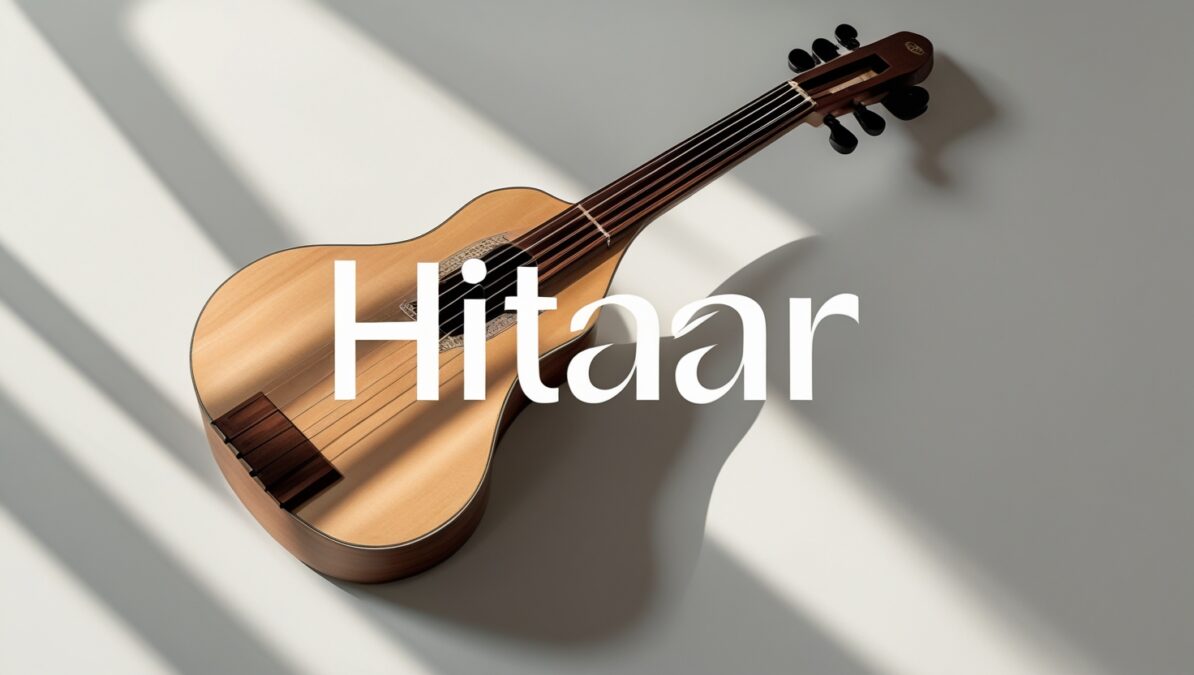The Timeless Appeal of the Guitar
The Hitaar stands as one of the most versatile and beloved musical instruments in human history, transcending cultural boundaries and musical genres to become a universal symbol of artistic expression. From the intimate strumming of a classical acoustic piece to the electrifying solos of rock legends, the guitar has shaped the soundtrack of our lives for centuries. This comprehensive guide explores everything you need to know about guitars, whether you’re a beginner taking your first steps into the musical world or an experienced player looking to deepen your understanding of this magnificent instrument.
The Rich History and Evolution of the Guitar
The Hitaar journey begins thousands of years ago, with ancient stringed instruments serving as its earliest ancestors. The modern guitar evolved from the lute and vihuela of the Renaissance period, gradually developing into the instrument we recognize today. The Spanish luthiers of the 19th century, particularly Antonio Torres Jurado, revolutionized guitar construction by establishing the basic proportions and fan-bracing system still used in classical guitars today.
The 20th century witnessed the guitar’s most dramatic transformation with the invention of the electric guitar. Pioneers like Les Paul, Leo Fender, and Ted McCarty created instruments that would define popular music for generations. The electric guitar didn’t just amplify sound; it created entirely new possibilities for musical expression, giving birth to genres like rock and roll, blues-rock, and heavy metal.
Types of Guitars: Finding Your Perfect Match
Classical Guitars
Classical guitars feature nylon strings and wider necks, producing warm, mellow tones perfect for classical, flamenco, and fingerstyle music. Their softer string tension makes them ideal for beginners, as they’re easier on the fingers during those crucial early learning stages. The traditional classical guitar body shape provides excellent resonance and projection without amplification.
Acoustic Hitaars
Steel-string acoustic Hitaar deliver bright, crisp tones with greater volume and sustain than their classical counterparts. Available in various body sizes—from the small parlor guitars to jumbo dreadnoughts—acoustic guitars serve diverse musical styles including folk, country, pop, and rock. The choice of tonewoods significantly affects the instrument’s sound, with spruce tops providing brightness, cedar offering warmth, and mahogany delivering a balanced, focused tone.
Electric Hitaar
Electric Hitaar revolutionized music by using electromagnetic pickups to convert string vibrations into electrical signals. Solid-body electrics like the Fender Stratocaster and Gibson Les Paul became icons of rock music, while semi-hollow and hollow-body electrics found their place in jazz and blues. The endless possibilities for sound modification through amplifiers and effects pedals make electric guitars incredibly versatile instruments.
Bass Hitaar
Though technically a different instrument, bass guitars share the guitar family lineage and provide the rhythmic and harmonic foundation in most modern music. Typically featuring four strings tuned an octave lower than a guitar’s bottom four strings, bass guitars come in both acoustic and electric varieties, with five and six-string variants becoming increasingly popular.
Essential Components and Anatomy

Understanding your Hitaar’s anatomy is crucial for maintenance, communication with other musicians, and making informed purchasing decisions. The main components include:
The headstock houses the tuning machines that adjust string tension and pitch. The nut at the junction of the headstock and neck maintains proper string spacing and height. The neck contains the fretboard, where fingers press strings against metal frets to change pitch. The body serves as the resonating chamber in acoustic guitars or the mounting platform for pickups and electronics in electric guitars.
The bridge anchors the strings at the body end and transmits vibrations to the soundboard in acoustic guitars. In electric guitars, different bridge types—fixed, tremolo, or locking—offer various playing possibilities and tuning stability options. The soundhole in acoustic guitars allows air movement that enhances volume and tone projection.
Learning and Mastering Techniques
Fundamental Techniques for Beginners
Starting your Hitaar journey requires mastering basic techniques that form the foundation of all playing styles. Proper posture and hand positioning prevent injury and facilitate smooth playing. Learning open chords—C, G, D, E, A, and their minor variations—opens doors to playing thousands of songs. Developing consistent strumming patterns and rhythm timing is equally important as learning chords.
Intermediate Skills Development
As players progress, barre chords become essential for playing in any key across the fretboard. Fingerpicking techniques add sophistication and dynamic range to your playing. Understanding scales, particularly the pentatonic and major scales, enables improvisation and lead playing. Learning to read tablature and standard notation expands your repertoire and communication with other musicians.
Advanced Techniques and Styles
Advanced players explore techniques like sweep picking, tapping, harmonics, and complex fingerstyle arrangements. Understanding music theory—modes, chord progressions, and harmony—elevates playing from recreation to artistry. Developing a personal style while maintaining technical proficiency distinguishes professional players from hobbyists.
Maintenance and Care
Proper Hitaar maintenance ensures optimal playability and longevity. Regular cleaning removes oils and debris that can damage finishes and corrode strings. Maintaining proper humidity levels (45-55%) prevents wood cracking and warping. String changes should occur every 1-3 months depending on playing frequency, and the opportunity should be used to clean the fretboard and check hardware.
Professional setups optimize action height, intonation, and neck relief for your playing style. Learning basic maintenance tasks like adjusting truss rods and bridge height empowers players to customize their instruments’ feel and playability.
Choosing the Right Guitar

Selecting a Hitaar involves balancing budget, playing style, and personal preferences. Beginners should prioritize playability and comfort over prestigious brands or exotic features. The guitar should feel comfortable when held, with action low enough for easy fretting but high enough to prevent buzzing. Sound quality, while important, often matters less for beginners than an instrument that encourages regular practice.
Budget considerations extend beyond the initial purchase to include necessary accessories: cases, straps, picks, tuners, and potentially amplifiers for electric guitars. Quality entry-level guitars from reputable manufacturers provide excellent value, with many players keeping their first quality instrument throughout their careers.
The Hitaar’s Cultural Impact
The Hitaar’s influence extends far beyond music into fashion, visual arts, and social movements. Hitaar heroes like Jimi Hendrix, Eric Clapton, and Jimmy Page became cultural icons whose influence transcended music. The instrument democratized music-making, enabling singer-songwriters to accompany themselves and share their messages with the world.
In contemporary culture, the guitar continues evolving through technology integration, with digital modeling, MIDI capabilities, and innovative manufacturing techniques pushing boundaries while respecting tradition.
Conclusion: Your Guitar Journey Awaits
The Hitaar offers a lifetime of discovery, challenge, and reward. Whether strumming campfire songs, performing on stage, or simply playing for personal enjoyment, the guitar provides a direct channel for emotional and creative expression. Its accessibility to beginners combined with limitless potential for growth makes it an ideal instrument for anyone drawn to music.
Starting your guitar journey requires only three things: an instrument, dedication to practice, and passion for music. With these elements and the knowledge shared in this guide, you’re equipped to begin or continue your exploration of this remarkable instrument. The guitar has been humanity’s companion through centuries of change, and it stands ready to accompany you through your own musical adventure.
Remember, every guitar legend started with their first chord, their first song, and their first performance. Your guitar story begins the moment you pick up the instrument and make it sing. The journey of a thousand melodies begins with a single note.



